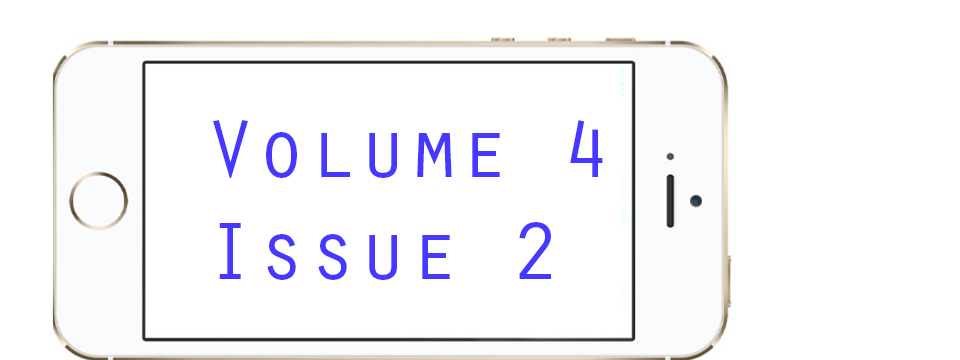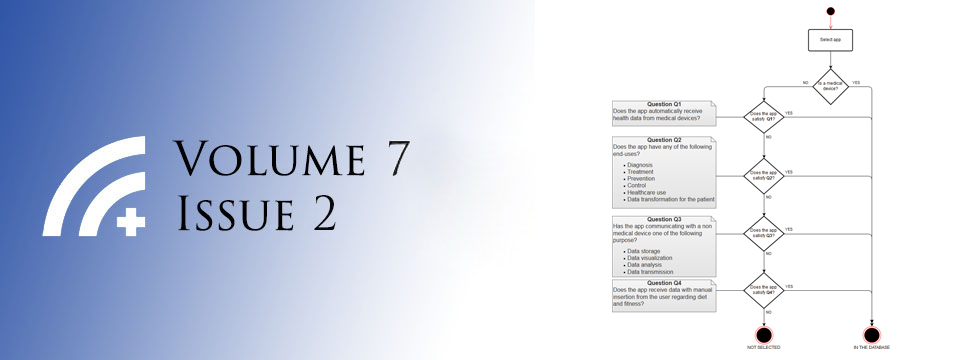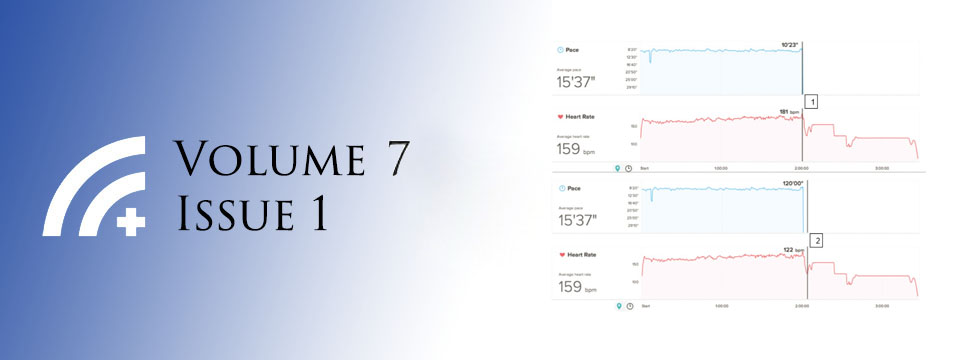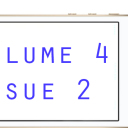Posted on Oct 13, 2015 in Original Article |
Justin Gatwood, PhD, MPH1, Rajesh Balkrishnan, PhD2, Steven R. Erickson, PharmD2, Lawrence C. An, MD3,4, John D. Piette, PhD3,5,6, Karen B. Farris, PhD2
1University of Tennessee College of Pharmacy, Memphis, TN, USA; 2University of Michigan College of Pharmacy, Ann Arbor, MI, USA; 3University of Michigan Medical School Department of Internal Medicine, Ann Arbor, MI, USA; 4University of Michigan Center for Health Communication Research, Ann Arbor, MI, USA; 5Department of Veterans Affairs Center for Clinical Management Research, Ann Arbor, MI, USA; 6Department of Health Behavior and Health Education, University of Michigan School of Public Health, Ann Arbor, MI, USA
Corresponding Author: jgatwood@uthsc.edu
Note: Portions of this article were presented at Wireless Health ’13, November 1–3, 2013, Baltimore, MD
Journal MTM 4:3:2–12, 2015
doi:10.7309/jmtm.4.3.2
Background: Mobile phone text messaging has become increasingly popular and text-based systems for patients with chronic diseases like diabetes are being rapidly developed. A paucity of information exists about preferences for and acceptance of health-related text messages by patients for self-management support.
Aims: To evaluate the use of mobile phones, acceptance of text messaging, and perspectives on receiving tailored text messages in adults with diabetes.
Methods: A total of 48 subjects were recruited into a randomized controlled study to improve medication adherence; 21 individuals provided responses on technology acceptance and 12 semi-structured telephone interviews were conducted at follow-up. After 90 days of tailored text messages, intervention arm subjects provided feedback on acceptance of the technology, personal perspectives on the receipt of tailored materials, and preferences for mobile phone use as part of their diabetes self-management.
Results: On average, participants exchanged less than 10 messages per day and those texting more frequently tended to be younger and owned smartphones. Participants’ perception of the utility and ease of use of text messaging was positive, both of which were more positive among participants with greater perceived competence for managing their diabetes and lower perceived barriers to treatment. Subjects felt that receiving one message per day was appropriate and they benefitted from the content. In general, subjects indicated the messages were primarily useful as reminders rather than a source of new information.
Conclusions: Acceptance of tailored text messages was high in adults with diabetes and subjects felt they could benefit from receiving similar messages in the future.
Posted on Jul 25, 2015 in Featured |

The Editorial Board at the Journal of Mobile Technology in Medicine is proud to present Volume 4, Issue 2. Mobile technology in Medicine is a rapidly developing area, and we hope to continue accelerating research in the field. We look forward to your submissions for Issue 3.
Posted on Jul 16, 2015 in Letter to the Editor |
Ahmad Fayaz-Bakhsh, MD, MSc, PhD1, Sara Geravandi, BSc2
1Health Information Management Research Center, School of Allied Medical Sciences, Tehran University of Medical Sciences, Tehran, Iran; and School of Public Health, Tehran University of Medical Sciences, Tehran, Iran; 2School of Public Health, Teharn University of Medical Science, Tehran, Iran
Corresponding Author: fayaz@tums.ac.ir
Journal MTM 4:2:51–52, 2015
doi:10.7309/jmtm.4.2.8
In February 2014, an original article, titled, “Medical Students’ Perceptions Regarding the Impact of Mobile Medical Applications on their Clinical Practice” was released in Journal MTM. The survey was conducted on all 169 medical students in their first clinical year of the International Medical University (IMU) in the city of Seremban, State of Negeri Sembilan, Malaysia. Data was collected by using a self-administered questionnare. The questions were formulated from a list of desired qualities in medical applications (apps) which has been published by Visser BJ and Bouman J. The students’ perceptions regarding medical apps, the impact of medical apps on clinical practice and the characteristics of an ideal medical app were explored. It was found that the prevalence of medical students who owned a smart device was about 88% and 87.5% had medical apps installed on their smart devices. Data was analysed by using SPSS software version 20. The results showed most students had positive perception towards smart devices and medical apps and agreed they have positive impact on their studies and clinical practice.1
Posted on Jul 16, 2015 in Perspective Pieces |
Moidin Shakil, MDS1, Karteek Durbakula2, Kulkarni Spoorti2, Maji Jose, MDS1
1Department of Oral & Maxillofacial Pathology, Yenepoya Dental College, Mangalore, Karnataka, India; 2Post Graduate Student, Department of Oral & Maxillofacial Pathology, Yenepoya Dental College, Mangalore, Karnataka, India
Corresponding Author: karteek.durbakula@gmail.com
Journal MTM 4:2:48–50, 2015
doi:10.7309/jmtm.4.2.7
Quick Response Codes are used in modern day lifestyle for various purposes. Yencode (QR Code) is an innovative approach in recording and maintenance of slide details. Having an access to slide information from any part of the world with mobile QR Code scanner software will enable in early diagnosis and effective treatment. Yencode is a boost to retrospective studies as it saves a lot of time and problems encountered in recollecting old details and minimizes manual efforts in retrieval of information.
Posted on Jul 16, 2015 in Original Article |
Ryan Z. Amick, PhD1, Alex Chaparro, PhD2, Jeremy A. Patterson, PhD3, Michael J. Jorgensen, PhD4
1Department of Human Performance Studies, College of Education, Wichita State University, Wichita, KS; 2Department of Psychology- Human Factors, Aging, Perception & Performance Laboratory, College of Liberal Arts and Sciences, Wichita State University, Wichita, KS; 3Department of Human Performance Studies, Human Performance Laboratory, Center for Physical Activity and Aging, College of Education, Wichita State University, Wichita, KS; 4Department of Biomedical Engineering, College of Engineering, Wichita State University, Wichita, KS
Corresponding Author: ryan.amick@wichita.edu
Journal MTM 4:2:40–47, 2015
doi:10.7309/jmtm.4.2.6
Background: The SWAY Balance Mobile Application is an FDA-cleared balance testing system which uses the built-in tri-axial accelerometers of a mobile electronic device to objectively assess postural movement. The system was designed to provide a means of quantitative balance assessment in clinical and on-field environments. The purpose of this study was to determine the intrasession and intersession reliability, as well as the minimum difference to be considered real, of the SWAY Balance Mobile Application.
Methods: 24 individuals (15 male, 9 female; aged 25.96 (±5.78 years)) performed the SWAY Balance protocol twice per testing session over a period of three testing sessions. Each testing session was separated by a minimum of seven days. Interclass Correlation Coefficients were calculated as an indication of the test-retest reliability. The minimum difference to be considered real was calculated to determine the minimum score change necessary to indicate an actual change in balance performance.
Results: Mean SWAY Balance scores ranged from 86.90 (±14.37) to 89.90 (±11.19). Repeated measures ANOVA revealed no significant mean differences between SWAY balance scores of the experimental trials (F(5,115) = 0.673; p = 0.65). Excellent reliability was found (ICC(3,1) = 0.76; SEM = 5.39) with a minimum difference to be considered real of approximately 15.
Conclusions: Results indicate that SWAY provides excellent overall reliability. However, it may be appropriate to have subjects perform a familiarization trial at the beginning of each testing session. Additionally, SWAY may demonstrate a ceiling effect when assessing balance improvements in those who already demonstrate good balance.
Posted on Jul 16, 2015 in Original Article |
Kavindu Kumaragama1, Pradeepa Dasanayake, MBBS, MD, FRANZCP2
1Undergraduate in Biomedicine at the University of Melbourne, Victoria, Australia; 2Consultant Psychiatrist, The Melbourne Clinic, 130 Church Street, Richmond, Victoria, Australia
Corresponding author: pradeepa.dasanayake@mh.org.au
Journal MTM 4:2:33–39, 2015
doi:10.7309/jmtm.4.2.5
Background: Mobile health tools are currently available for both clinicians and patients. However, there were no published articles related to Attention Deficit Hyperactivity Disorder (ADHD) applications for smartphones or tablets.
Aim: Provide information in relation to apps available from iTunes store for managing ADHD.
Methods: A literature search was performed. The Australian iTunes App Store and Google were searched with the keyword ADHD. Only apps from the iTunes Store were downloaded and tested. Categorisation was done in order to elucidate their functionality.
Results: 32 apps were found and compared in ratings, functionality and cost. There were no customer ratings or reviews on any of the ADHD applications. Applications were categorised according to functionality. The cost ranged from free to $10.49.
Conclusion: Apps specific to ADHD are available for suitable electronic devices. These provide education assistance with diagnosis and monitoring of the condition. The basic costs range from free of charge to $10/-. Information is provided to assist in selecting applications based on the need of the user.











